Beautiful PARROTS
Cage & Aviary Birds
|November 06, 2019
ROSEMARY LOW considers the Philippine hanging parrot and its numerous subspecies – some of which ought to be considered full species and deserve urgent protection

THE hanging parrots (Loriculus) are a group of small parrots of exceptional beauty: they are living jewels. They measure between 11-14cm (4-51/2in) and weigh 20-36g. Their plumage is a vibrant shade of green. Twelve of the 13 species have the rump and upper tail coverts crimson.
The display is mesmerising because the birds suddenly erect these feathers so that they stand away from the body. This is an amazing sight, whose beauty must be seen to be believed! In this genus the tail is very short, barely extending beyond the wing coverts. The beak is small and the upper mandible narrow.
This is a genus of contrasts. Some species are sexually dimorphic; some are not. The eye colour differs. It is dark in the Philippine (L. philippensis), giving it a soft, gentle appearance. The white iris of the vernal hanging parrot (L.vernalis) gives it a hard, staring look.

Members of this genus are very widely distributed, in New Guinea, various Indonesian island and the Philippines, and Asian countries including India, Sri Lanka, Nepal, China and Thailand.
The Philippine hanging parrot is the largest and most colourful, and is relentlessly sought by trappers. Not all taxonomists agree with the view that there are 13 species of hanging parrots. In 2006 a new species was described from the island of Camiguin in the Philippines. It differed from nearby Mindanao’s race
Denne historien er fra November 06, 2019-utgaven av Cage & Aviary Birds.
Abonner på Magzter GOLD for å få tilgang til tusenvis av kuraterte premiumhistorier og over 9000 magasiner og aviser.
Allerede abonnent? Logg på
FLERE HISTORIER FRA Cage & Aviary Birds
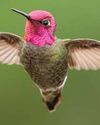
Cage & Aviary Birds
The World's Best-Known Hummingbird?
Intensively studied, the gem-like Anna’s hummingbird is a welcome visitor to the gardens of America’s most populous state: California. Bill Naylor investigates its life history
5 mins
December 18, 2019
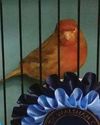
Cage & Aviary Birds
The charm of the English Cinnamon
Despite its long and complicated history, the true Cinnamon canary is still with us – in the hands of a tiny group of breeders. DONALD SKINNER-REID reckons it deserves wider appreciation
4 mins
December 24, 2019
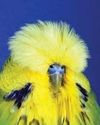
Cage & Aviary Birds
Spangles: a personal overview
FRED WRIGHT relates a budgie story of over-exploitation, consequent problems and abundant potential for the future
4 mins
December 24, 2019

Cage & Aviary Birds
New converts to old breeds
Old and rare canaries have a reputation for adding fresh interest and challenge to the hobby. PETE HOOK and NICK JOY agree, and explain the birds’ charm to Dave Brown
3 mins
December 24, 2019

Cage & Aviary Birds
Themed aviaries are a hit with the public at annual Stafford show
DECORATIVE AVIARY DISPLAYS from a CBS and an online bird keeping advice group were voted in the top three by visitors for the inaugural Stafford Aviary Competition.
1 mins
December 18, 2019
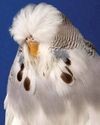
Cage & Aviary Birds
Pieds with potential
More than just a lesser variety, the dominant pied will introduce challenge and change into most studs, reckons CLIVE WAKEMAN. Here he discusses pairings to try and others to avoid
3 mins
December 18, 2019

Cage & Aviary Birds
Club News
Welcome to the club and show pages – the bit that’s all about you Results: convention, specialist & rare and Breeder of the Year
1 min
December 18, 2019

Cage & Aviary Birds
Canaries Month by Month:
With Christmas around the corner, BRIAN KEENAN is well into his winter programme, and reckons he might deserve a nice outcross
4 mins
December 18, 2019
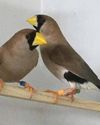
Cage & Aviary Birds
Smart Choice, Docile Nature
Dave Brown welcomes the masked grassfinch to his birdroom and shares advice on this lovely Australian species
3 mins
December 04, 2019
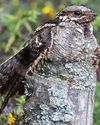
Cage & Aviary Birds
The truth about the ‘flying toad'
Odd local names and weird superstitions can’t hide the beauty and elegance of the nightjar, a species that has made a fascinating subject in a few zoo collections, reveals BILL NAYLOR
5 mins
December 04, 2019
Translate
Change font size

